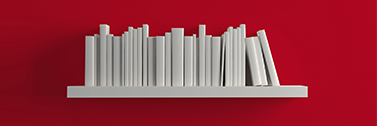
The questions
The impact of the pandemic on the Fashion & Luxury (F&L) industry has been extreme. Lockdowns have forced millions of people to remain in their homes, freezing tourism; stores have closed, physical stores have seen sales plummet, with a number of them moving online; production has nosedived, and a drop in earnings has reduced coverage for fixed costs of both production and personnel; pre-payments made on the wages guarantee fund by many companies, the costs of communication and marketing for branding alone and not for sales, the breakdown of some supply chains: all this – beyond generating serious liquidity stress - has shrunk revenues and profit margins dramatically.
Against the backdrop of this demanding situation, according to many analysts and observers, a portion of F&L purchases will shift on to Direct to Consumer (D2C) digital channels in the near future, bringing a downturn in in-store buying. The challenge will be predicting how this “hybrid” purchasing mix will play out (in all its forms, to include ROPO and showrooming). Keep in mind that some analysts (McKinsey, to name one) estimate that for Europe, the share of online purchases in 2021 will be 22% of the total (which means 78% will remain offline). This figure will be considerably higher in the US and China.
The web, mobile apps and other kinds of applications (relating to analytics, AI, augmented reality, store sensors, etc.) are now being endowed with miraculous powers, the answer to all the prayers of a seriously struggling industry. But what we need to figure out is if all these are really are only experimental “props” without real go-live and scaling potential, tactics that are currently being used as stopgap remedies to contend with the emergency. Or whether these technologies are integrated with managerial processes and the workflows of companies and their ecosystems, and thanks to this integration, are actually capable of generating value.
Fieldwork
“Digital Resilience in the Fashion & Luxury industry: technologies, trends and strategies for the future challenges facing Italian companies:” this is the study run by SDA Bocconi in collaboration with con Besight and Certilogo, sponsored by Confindustria Moda (the Italian Federation of Textiles, Fashion and Accessories). The research explored the capacity of Italian F&L companies to absorb unexpected shocks and the ability to react to reestablish acceptable levels of performance. Specific aspects under investigation were the ability to digitalize various areas of business processes, in addition to products and stores, the economic and organizational structure of the ICT and Digital functions set up to take the lead on digital change, and the organizational readiness for this change.
Participants included 101 F&L companies (which taken together account for more than 50% of the industry’s turnover). Generally speaking, what emerged is solid digital resilience. Here’s a closer look at some of the findings:
- The strategic objectives of companies and of the ICT/Digital functions are clear, consistent, and well-aligned, more “customer-oriented” than “product-oriented” or focused on cutting operating costs.
- The companies in the sample intend to continue investing in ICT/Digital, in some cases growing the allocated budgets by 10% or more. These investments center on substituting current applications with new software packages on the market, in particular for key areas of company processes: eCommerce/mCommerce, B2C and B2B, corporate planning, (multichannel) CRM/Customer care, and production management.
- The extent of coverage of current software applications (a critical factor in digital resilience) is high on average in all the corporate process areas we analyzed. For the most part, this coverage consists in vertical market solutions or ERP, with surprisingly little custom software.
- Digital resilience also means setting up an ICT/Digital function that effectively deals with developing an information system, driving the digital evolution of these companies. Most often we found a single function (64% of the cases) which handles both the more managerial aspects of ICT, as well as the new components that today we conventionally refer to as “digital,” with impressive investment allocations and budgets.
- Technologies and digital environments that are most interesting in the short term are those that revolve around web and mobile digital channels as well as data collection, management and analysis (65% data analytics and 62% AI). Social media has far less appeal (despite the established market presence of these platforms), as does blockchain, 3D printing and robotics. Despite the fact that these technologies have recently been launched and relaunched on the market, they may not have yet found their proper place in an industry such as F&L, driven by creativity of the products and emotions tied to purchases, as well as the simplicity and pragmatism of the technological solutions that would be adopted.
- “Connected products” represent an emerging digital environment, albeit one that is still attracting limited attention: smart tags, sensors, wearable devices and the IoT are listed as the most interesting environments by only 23% of the companies in the study. Instead, 36% say they have already adopted smart tag technologies, in most cases open to the final consumer, while 23% use product traceability solutions. The most relevant, wide-spread service offered to consumers who interact with a connected product is verification of authenticity (cited by 63% of companies), followed by content on the product itself (information about materials and sustainability of production) or the brand (new arrivals, special offers, or signups for specific initiatives).
- The readiness of the organization for digital change is medium-low on all factors that were investigated in the study. Specifically, readiness is lower on soft factors such as “aptitudes and abilities” (managing errors for learning purposes, change management, digital culture; the exception was better scores on multifunctional teamwork). Readiness is appreciably higher in hard factors such as “methods and practices” (e.g. the financing plan for digital or agile methods or business cases).
- The top brands do not always take the top spots for all the resilience factors the study analyzed: the F&L ecosystem seems to move all together, as one (subcontractors, licensees, and companies that provide products and services to the industry). In fact, the three strategic goals that are highest priority for companies and ICT/Digital functions (improving customer experience, creating an e-commerce channel and learning about customers through data) are the same for all five business categories (which include Fashion & Luxury brands, Sport brands and Wholesale/Retail brands). Instead, sustainability, brand protection and managing retail networks rank as the top three strategic goals only for subcontractors and Wholesale/Retail brands. Lastly, Sport brands seem to be much more ready for digital change at an organizational level. Digitalization integrated along the entire value chain could be a tremendous benefit for the entire F&L system in Italy, while guaranteeing the right kind of support for growing in international markets at the same time.
- In the F&L industry, too, the study verified a “digital divide” of sorts between larger and smaller companies, in particular with regard to current levels of satisfaction and coverage of software applications, above all in terms of average organizational readiness.
Moving forward
What we can infer from the results of the research is that F&L companies want to be pragmatic; they want to watch how the digital market evolves; they want to interact with startups that bring fresh digital technologies and skills to the table. At the same time, these organizations are aware of the fact that true innovation is up to them, applying and amplifying new paradigms on the market relating to technologies and skills.
The key factors in change are brand positioning, production flexibility (abandoning to some extent the seasonal collections rationale), project agility, and fact and data-based decision-making processes. On this last point, data can help companies track changes in demand among geographical areas, product categories, channels and customer segments with different value.
Emotionality, inspiration, exclusiveness - key elements in the purchasing process in F&L - will probably strike a new balance with other elements that simplify the operative purchasing process (to include online, from purchase to return) and improve customer service, bringing customers in closer contact with the company.
The biggest challenge for the future lies in finding the right combination of online experience and the human touch.
For more information or to receive a copy of the research report, please email paolo.pasini@unibocconi.it



